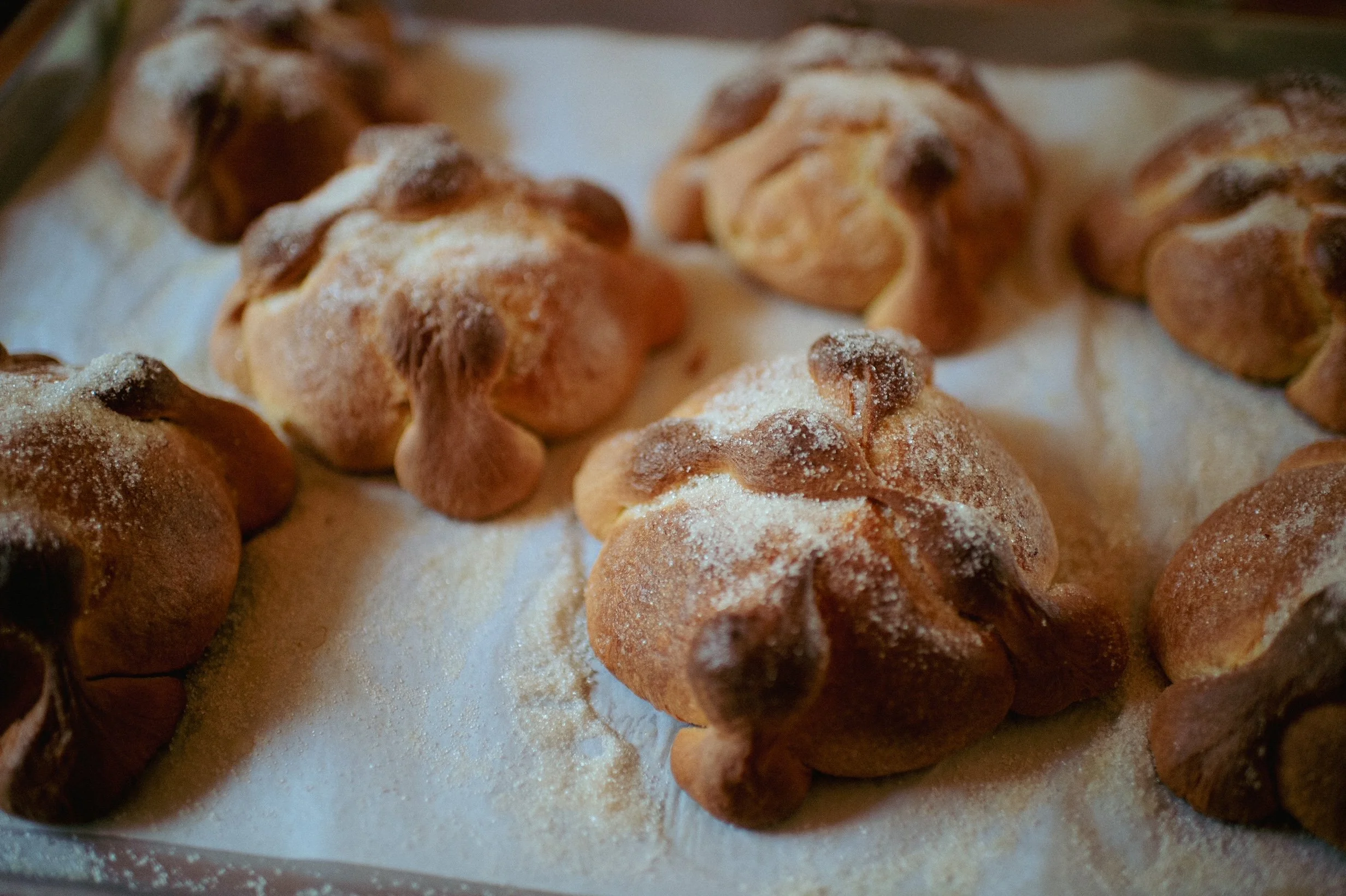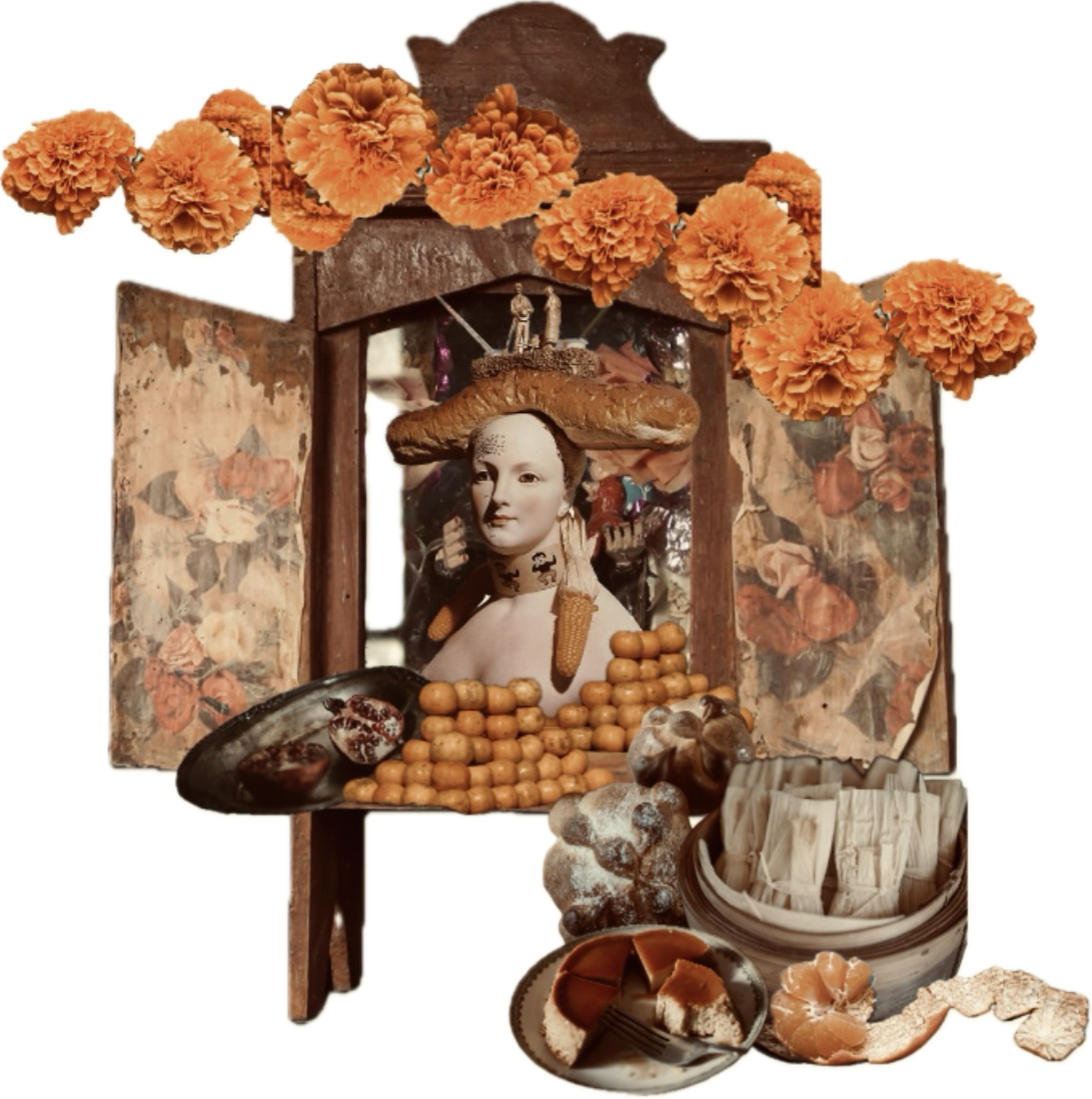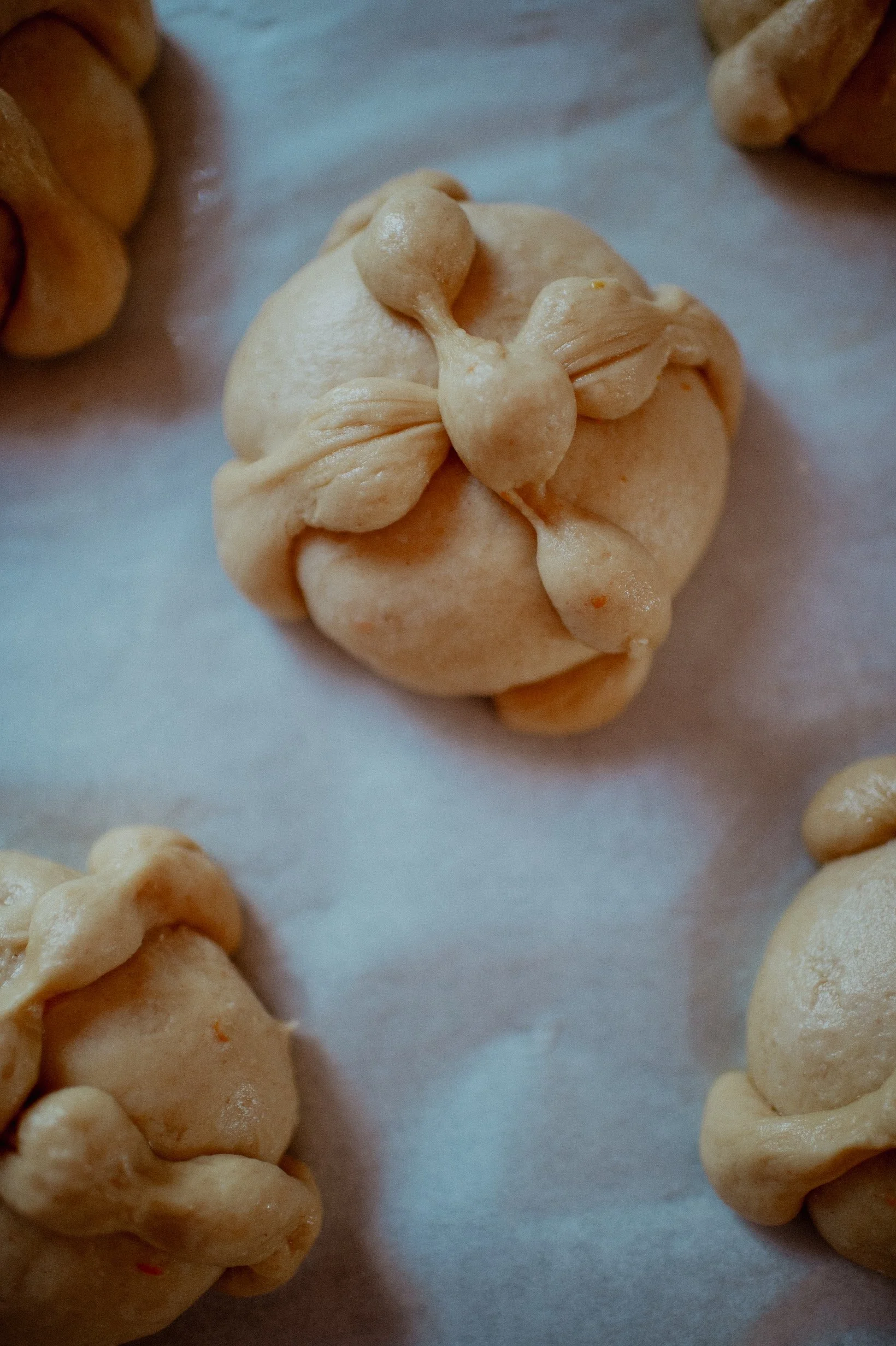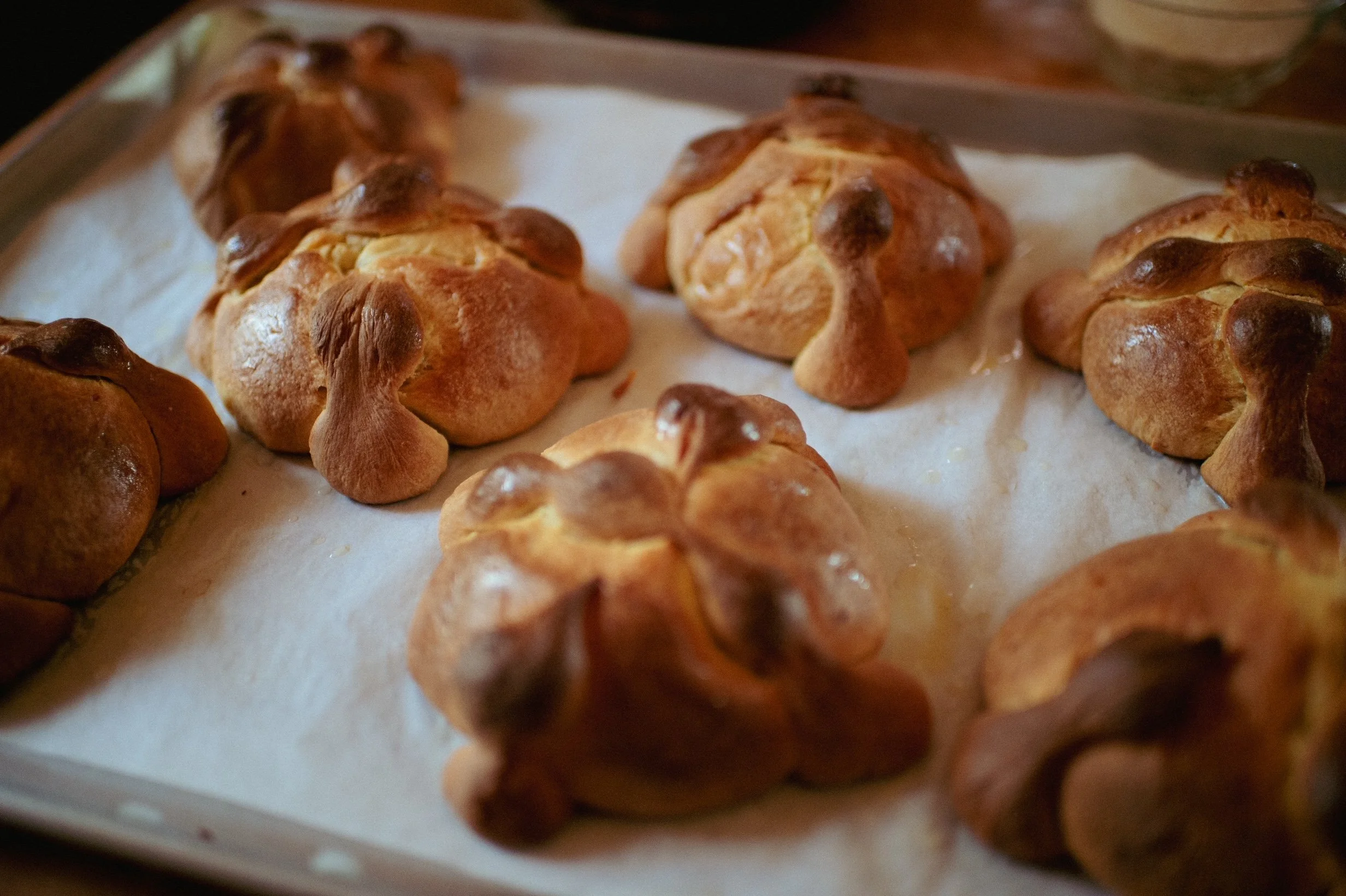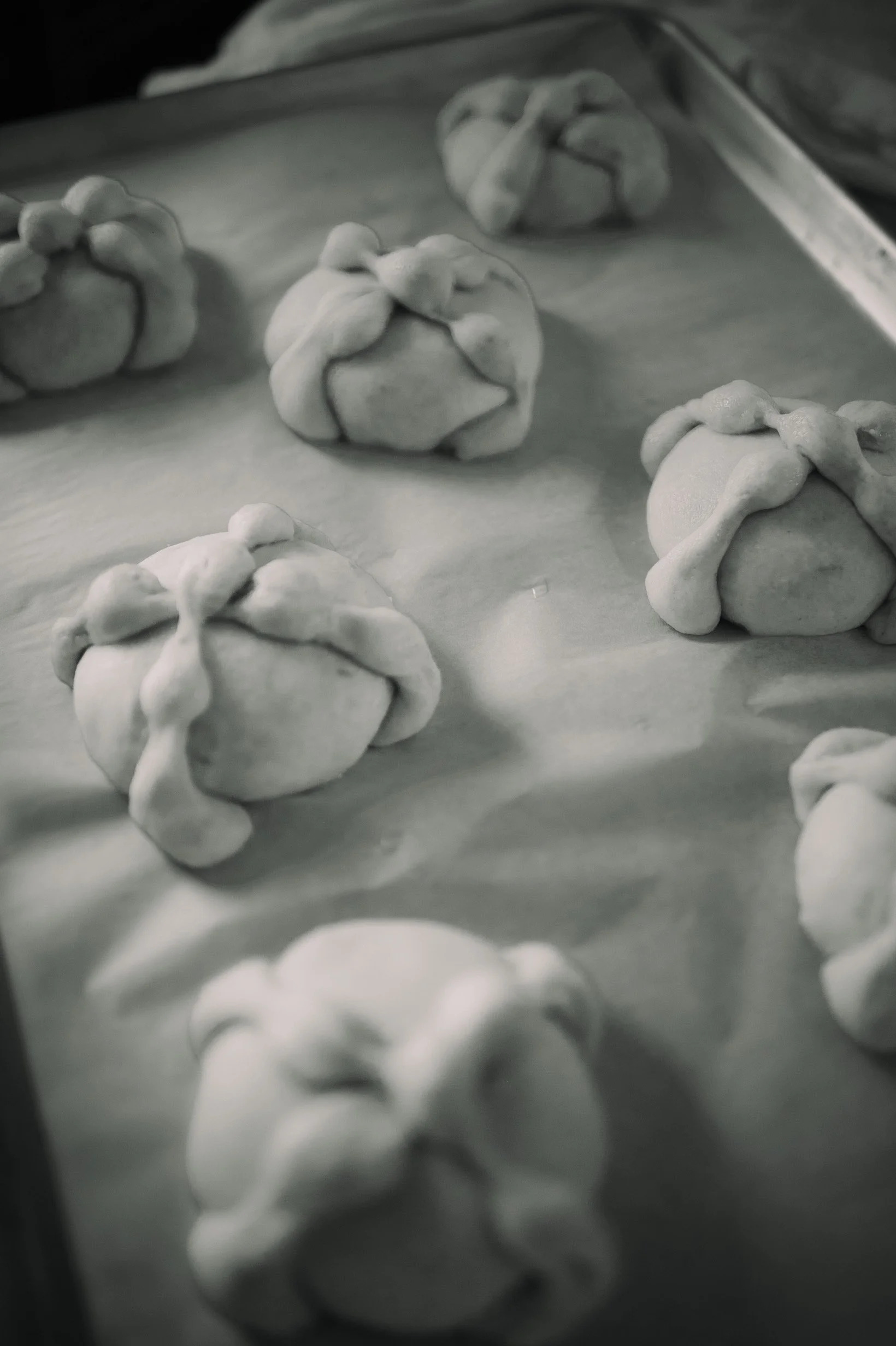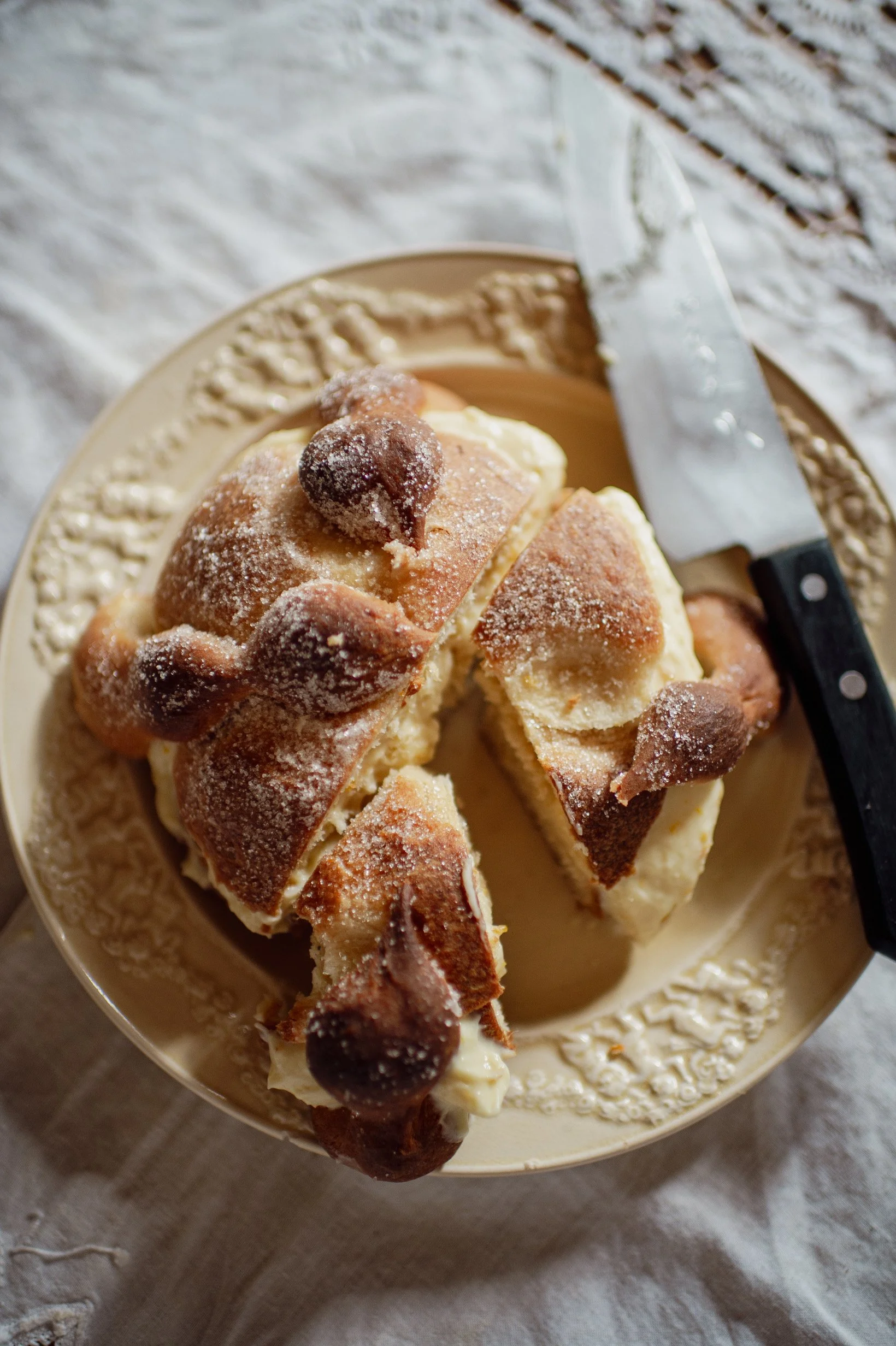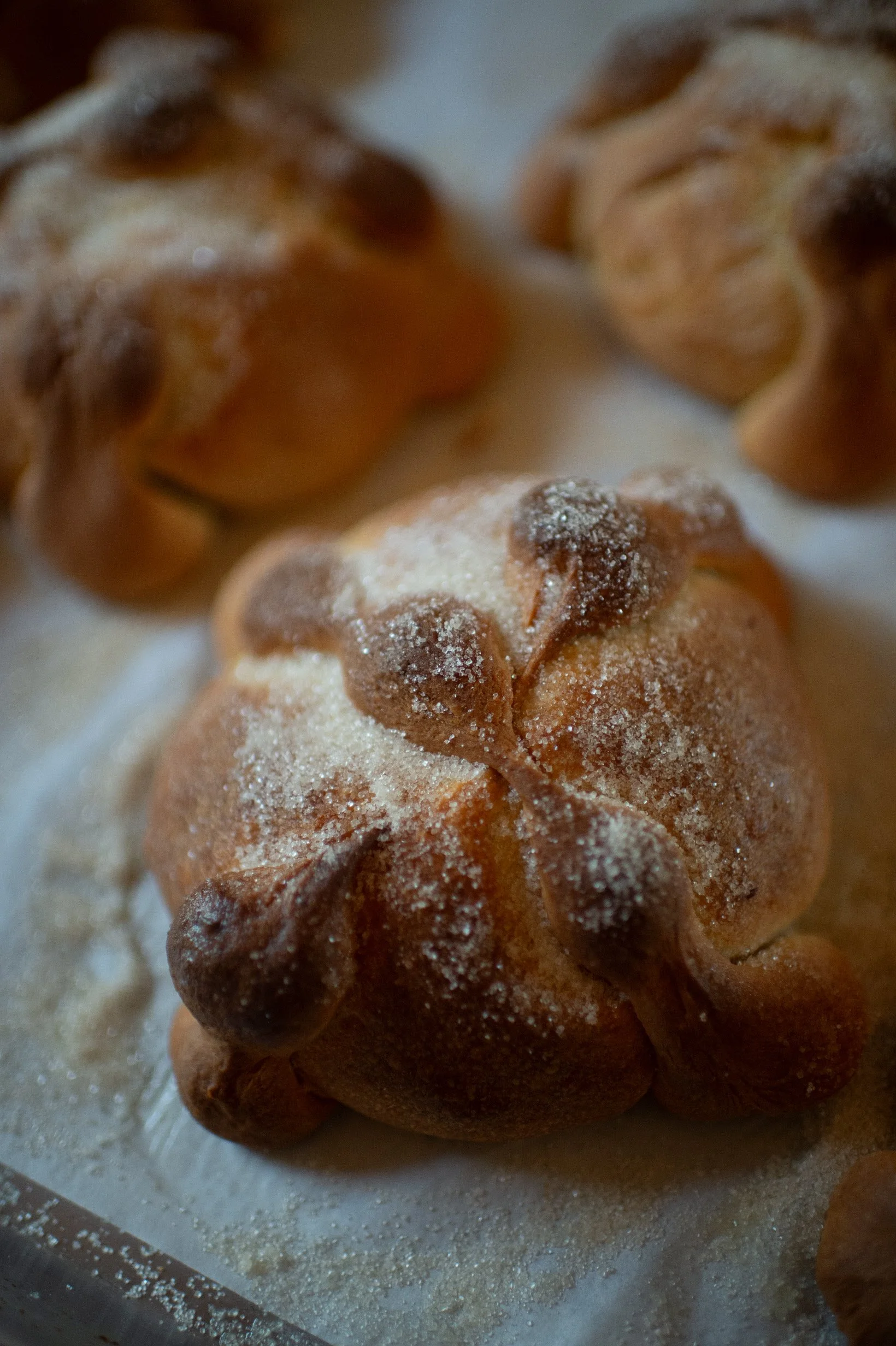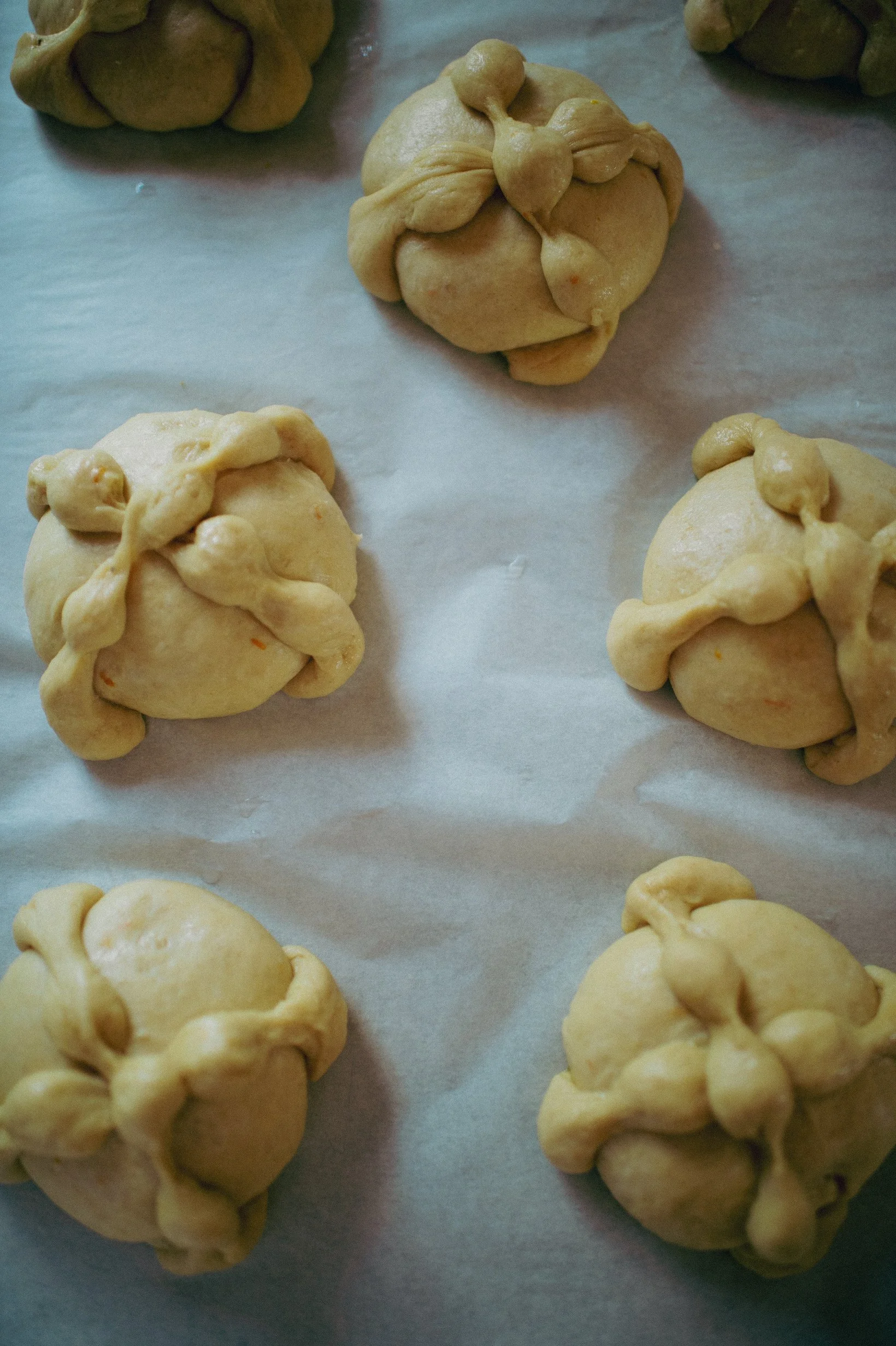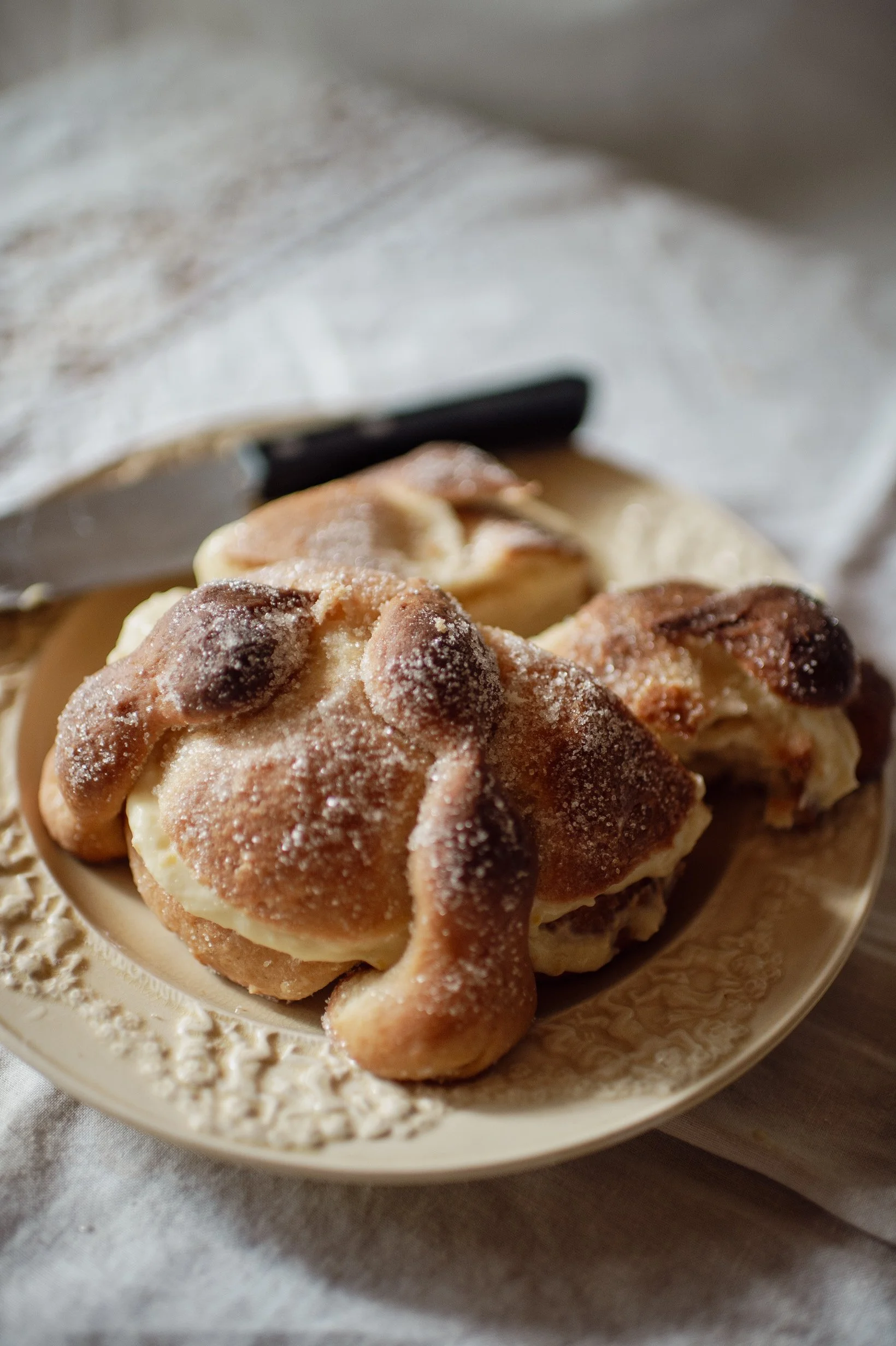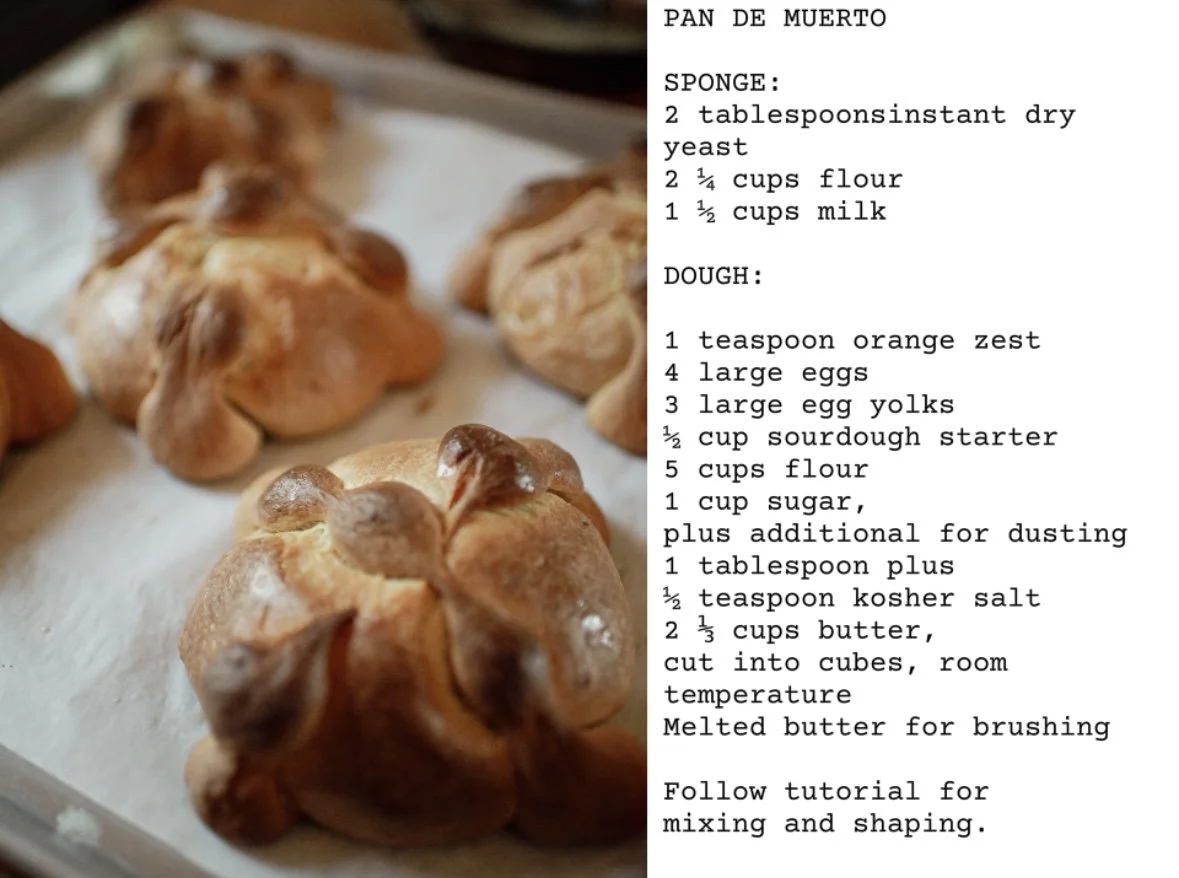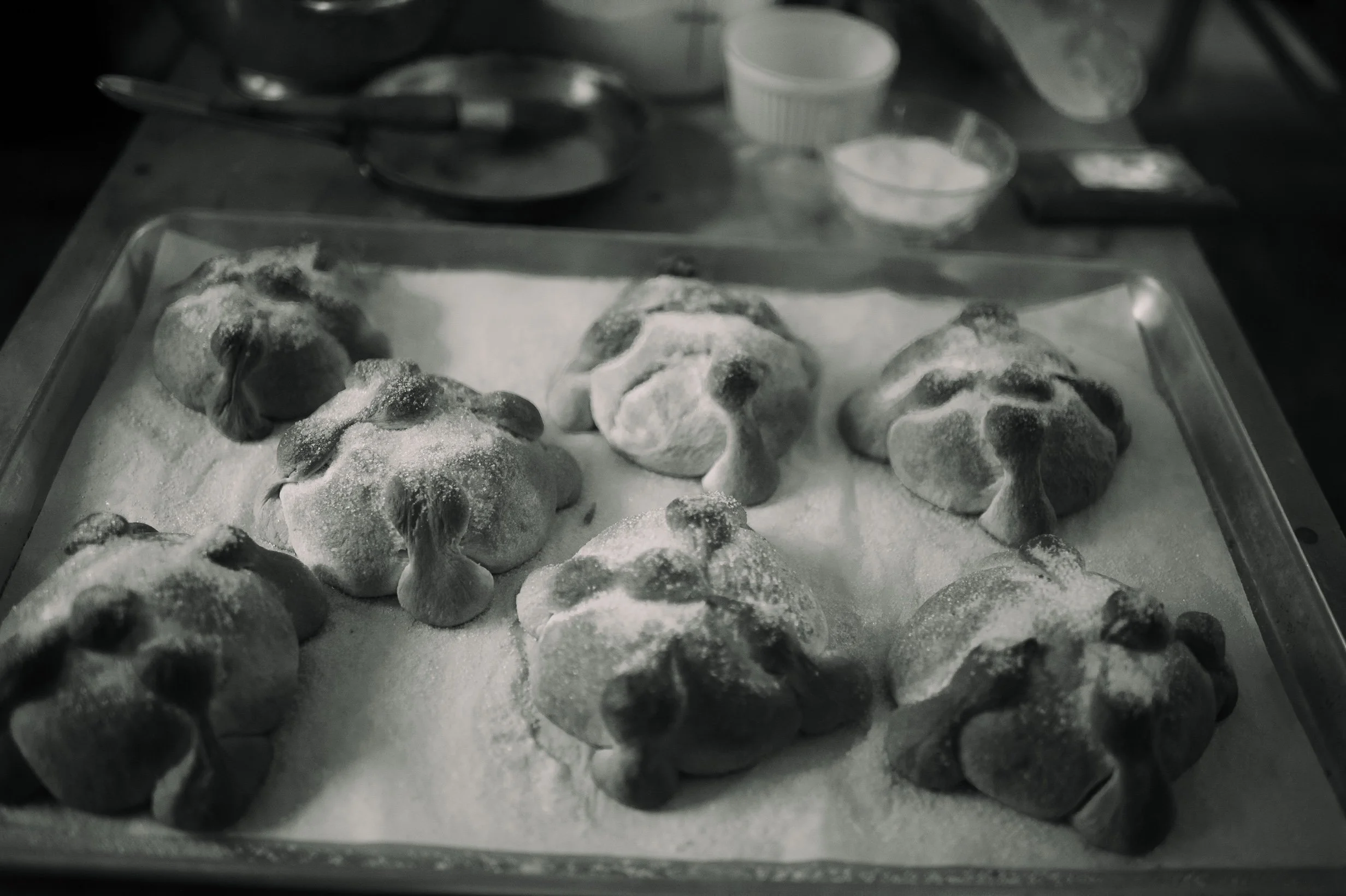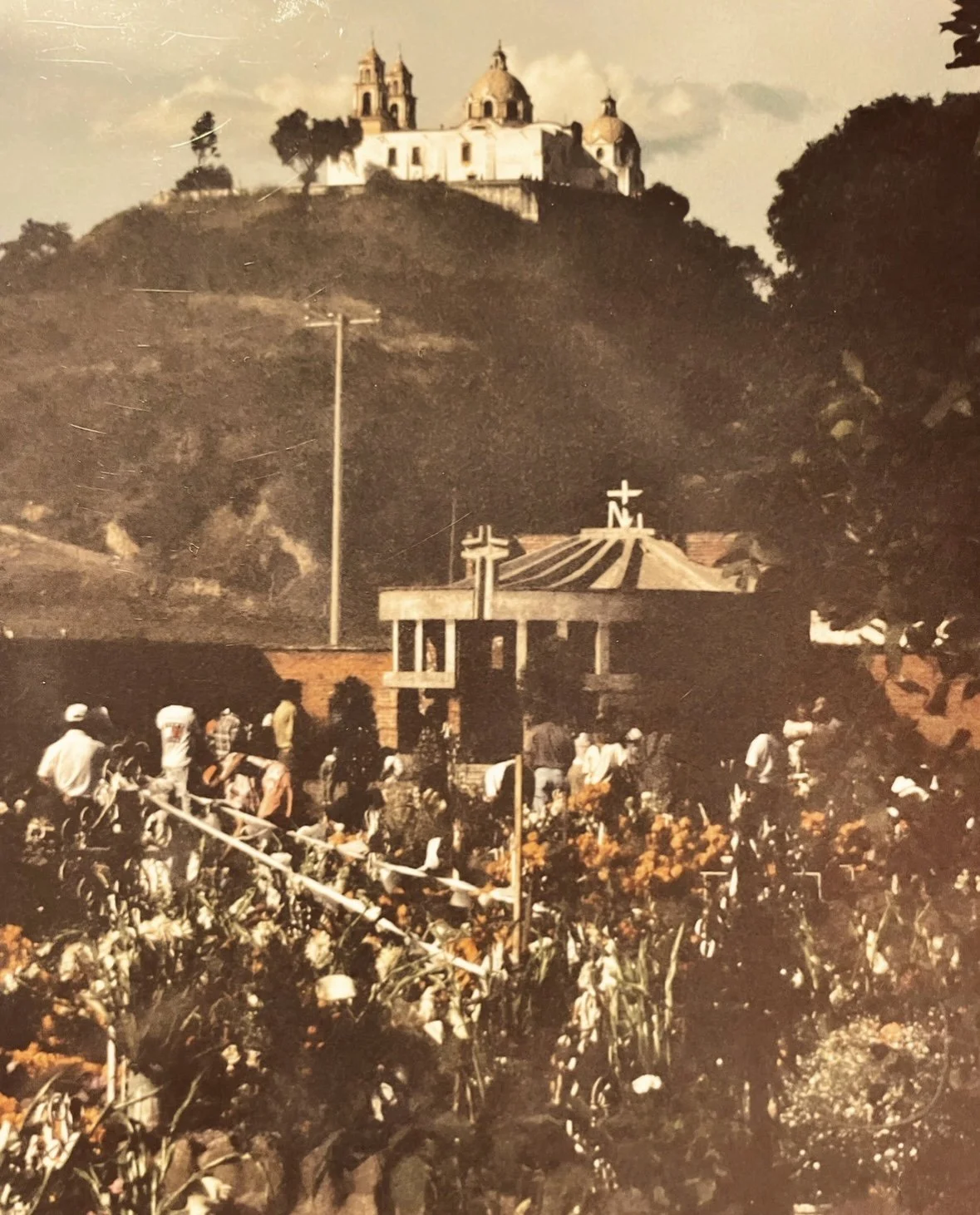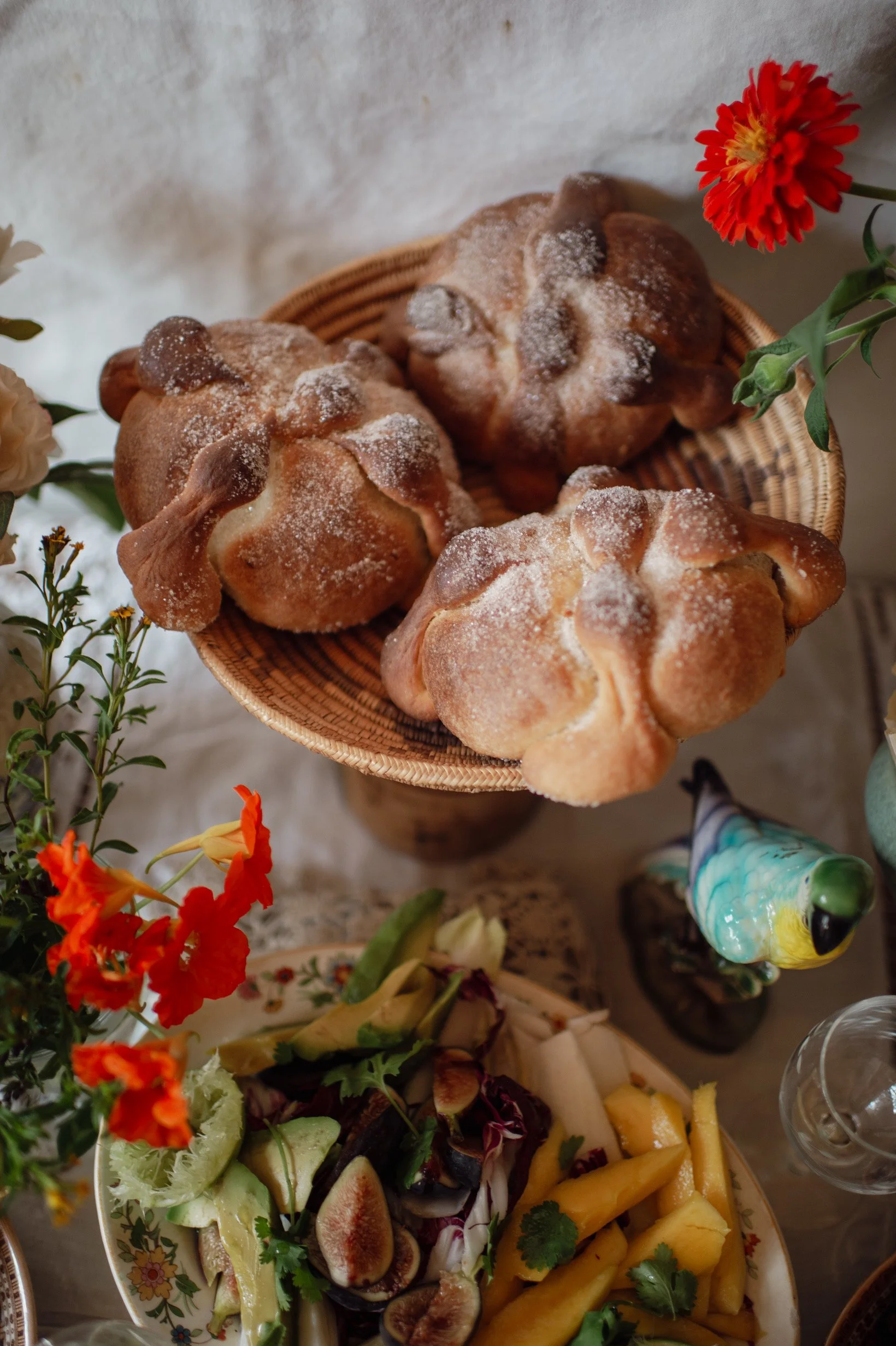PAN DE MUERTO
* * * * * * * * * * * * * * * * * * * * * * * * * * * * * *
* * * * * * * * * * * * * * * * * * * * * * * * * * * * * *
PAN DE MUERTO
A RECIPE FROM GUSTO BREAD FROM A 2024 ARTICLE IN THE LOS ANGELES TIMES: WHAT A GOOD FIND!
The first time I made Pan de Muerto was from a recipe I had stumbled across in a novel I was reading. For the life of me I cannot remember the book. What I do remember is that I forgot to put the yeast in and although the little decorative loaves came out looking lovely, they were as dense as a rock. It was not all for naught, as I was able to use them for decoration on the alter I had made for the Day of the Dead. They looked the part, they did not taste the part. For all the saintly spirits and ghosts I do apologize.
Pan de Muerto is a bread baked and displayed during the all saints holiday known as El Dia de los Muertos. Although there is some debate of the exact origin of the bread it seems to be a derivative of the mixed Spanish-indigenous cultures during the colonial period in Mexico. With the import of wheat, sugarcane, cow’s milk, butter and eggs from Spain, breads, beyond the corn tortilla, became prominent. It could be said that Pan de Muerto has it’s origins in the Pan de Animas, or ‘soul bread’ from different areas in Europe such as Portugal and Sicily. These breads were baked for All Saints on the 1st and 2nd of November to honor the dead.
With that said, the indigenous cultures in Mexico had their own ways of honoring the deceased. Some legends of dead bread may date back to the pre-hispanic practices of human sacrifice. One such myth depicts the still beating heart of a maiden being placed in a pot with amaranth. With the arrival of the Spanish conquistadores, the natives were forced to replace the beating heart with a sweet bun. Although there is no proof to the validity of this story, it serves as a way to understand the meaning and ritual behind the bread of the dead.
Pan de Muerto is shaped as a round loaf symbolizing, what the indigenous cultures refer to as, the cycle of life and death. The decoration over the top of the bread represents a skull and bones. Therefore the bread itself becomes the body of the deceased. By eating the bread, “death is challenged” so says Jose Luis Curiel Monteagudo.
Today, the tradition of this ‘soul bread’ has remained popular in Mexico and areas around the world with a strong hispanic culture. Loaves are baked for weeks prior to the day of the dead in celebration of those that have passed. On November 1st and 2nd the alters are graced with the sweet citrusy bread to feed the spirits that have come back to visit family and friends. It is a way of remembrance and gratitude to those who have passed and the live we still live.
Below is a recipe for Pan de Muerto that I gleaned from a Los Angeles Times article printed last year around this time. The formula comes from the fabulous bakers at Gusto Bread in Long Beach, CA. I find the making and eating of this bread all the more meaningful knowing it comes from them, as I appreciate completely their skill of baking authentically and from the heart.
I have included a suggestion to make a pastry cream infused with orange zest to fill your Pan Muerto with. It is decadent and divine.
Pan De muerto formula and tutorial
〰️
Pan De muerto formula and tutorial 〰️
THE DOUGH:
PROCESS:
Mix the sponge 30 minutes before mixing the final dough. Put all ingredients in a bowl and mix.
For the final dough: add the orange zest, eggs and egg yolks into the sponge and mix.
Add in your sourdough starter. This is optional but I would suggest using it if you have it for added flavor.
Sift your flour, sugar and salt together. Slowly mix into the dough until fully incorporated. Transfer to table and knead until soft but not sticky. Place back in bowl.
Slowly mix your room temperature butter into your dough. If mixing my hand this might take a little time.
Cover and let rest 1 hour or until double in size.
SHAPING AND BAKING
〰️
SHAPING AND BAKING 〰️
Follow this video tutorial for the shaping technique. You will be scaling 8 rounds of dough at 250 grams. Six of those will be your bread boule. With the other two pieces, scale out 12 rounds of dough at 40 grams. These will be shaped into your decorative bones. Each loaf will get two rolled out pieces of dough to lay as a cross over the bread. You will be able to get a better idea of how to roll out the bone pieces in the video.
TO MAKE THE PASTRY CREAM FOLLOW THE TUTORIAL ON THE PROFITEROLE PAGE HERE. ADD A SMALL HANDFUL OF ORANGE ZEST TO THE MILK WHILE IT IS HEATING OVER THE STOVE. THIS WILL GIVE YOU A BEAUTIFULLY CITRUSY FLAVORED PASTRY CREAM TO FILL YOUR PAN MUERTO WITH.
Cemetery in Cholula, Mexico during El Dia de Los Muertos celebrations: With the pyramid and Spanish cathedral in the background

